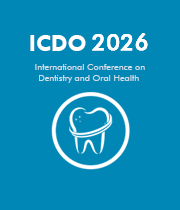Epidemiology of Oral Clefts
The epidemiology of oral clefts involves the study of the incidence, distribution, and determinants of these congenital anomalies affecting the lip and/or palate within populations. Worldwide, the prevalence of oral clefts varies, with certain populations and geographical regions exhibiting higher rates. Genetic factors play a significant role, as individuals with a family history of clefts are at an increased risk.
The occurrence of oral clefts differs between genders and ethnic groups, highlighting the complex interplay of genetic and environmental factors. Maternal lifestyle choices, nutritional deficiencies, and exposure to certain medications during pregnancy are recognized as potential contributors to the development of oral clefts.
Public health initiatives often focus on raising awareness about preventive measures, such as folic acid supplementation during pregnancy, to reduce the risk of oral clefts. Epidemiological research continues to explore new insights into the etiology and risk factors associated with these anomalies, contributing to improved preventive strategies and early interventions.
Understanding the epidemiology of oral clefts is vital for healthcare planning, resource allocation, and the development of supportive services for affected individuals and their families. Collaborative efforts between healthcare professionals, researchers, and public health organizations aim to enhance our knowledge and address the complexities of oral clefts on a global scale.

David Geoffrey Gillam
Queen Mary University of London, United Kingdom
Christopher Turner
Spacemark Dental, United Kingdom




Title : Evaluating hygienist follow up for head and neck oncology patients in secondary care: Results from a two cycle audit
Peter Basta, Newcastle Dental Hospital, United Kingdom
Title : Atypical facial pain unravelled
Christopher Turner, Spacemark Dental, United Kingdom
Title : New treatment of temporomandibular disorder through muscle balance and muscle regeneration by activation of quiescent muscle stem cells( satellite cells) with mitochondrial dynamics
Ki Ji Lee, National Reserach Foundation & Busan Medical University, Korea, Republic of
Title : MRONJ and ORN: Referral or management in primary care? Navigating guidelines in the context of long waiting lists
Alisha Sagar, NHS England, United Kingdom
Title : Managing the unexpected: An Insight into supernumerary teeth
Bahar Gharooni Dowrani, Guy's and St Thomas' NHS Foundation Trust, United Kingdom
Title : Laxative prescribing for post operative head and neck cancer patients at Derriford Hospital
Pui Sze Kylie Li, Cardiff and Vale University Health Board, United Kingdom